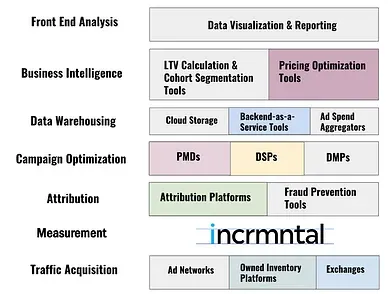Solutions
Teams
Built for your whole team.
Industries
Trusted by all verticals.
Mediums
Measure any type of ad spend
Platform
Use Cases
Many Possibilities. One Platform.
AI and Automation
The Always-on Incrementality Platform
Teams
Built for your whole team.
Industries
Trusted by all verticals.
Mediums
Measure any type of ad spend
Use Cases
Many Possibilities. One Platform.
AI and Automation
The Always-on Incrementality Platform
Learn how the best growth marketers work

The best performance marketers are somewhat of a mix of art and science, expected to handle complex situations, understanding statistics, knowing the technological aspects of digital marketing, responsible for the economies of scale, mastering (no bullshit) negotiations, and able to react fast to an extremely fast moving market.
Performance marketers, Growth Managers, Growth Hackers, UA Managers, are some of the smartest and most innovative people we know.
We spoke with some of our best friends in the industry to learn their four point formula for success.
If you skip to the end of this article, you’ll see that strategy is both the start and the end of the marketing cycle.
Strategizing is the most important, most enjoyable, and most frequently neglected step.
Many marketers define a strategy only once, and spend 90% of their time just testing various media vendors, creatives, and tactics.
Strategizing means applying knowledge, experience, and data to create a general plan to achieve one or more long-term goals.
Marketing Strategy is not a static document or key result - but an ever changing plan that must adapt to the learnings gained from all steps of the formula.
Some good questions a marketer should ask themselves during this stage are:
Assumptions are fun. They are the results of a strategy session where we use data, experience, and learnings to come up with answers to how we can solve the continuous marketing problem - growing at scale, while meeting the company goals.
Assumptions act as the marketing goals to each of the strategy questions.
The more specific the assumptions we make - the easier it is to know if they are correct or not while we move on to the next stage.
The caveat with assumptions is that if we end up extremely specific - we end up marketing to a sub-scale cohort of users.
“Our Goal is to reach 100,000 new customers” become impossible when we limit the the target group to an exact match, when: “Our e-trading platform customers are likely men, age 35-39, living in suburban areas, with an annual income of $300K+, reading financial news daily, play golf on weekends, go on one or more ski vacations per year”
Make Bolder Assumptions, based on your goals, based on the data you have.
If you’re goal is to reach 100,000 new customers, you need to make bolder assumptions based on data correlations and your experience.
“Sometimes removing targeting limitations and focusing on better converting creatives has a far greater impact than micro-targeting” (Thomas Petit @ThomasBCN at APS. Presentation can be found here)
Testing is the easiest part in today’s digital marketing world. Thanks to continued innovation and development in advertising technology, marketers have everything they need right at their fingertips.
Accessing inventories across every medium has never been easier with self service platforms such as the one offered by Google, Facebook, Unity, IronSource, and so on.
Trading platforms like Kayzen.io offer access to billions of impressions where market dynamics set the inventory price.

Attribution platforms such as Adjust, Appsflyer, Kochava, Branch.io, and Singular consolidate impression and click data to provide a deduplicated conversion count based on last-touch.
Advertisers can use marketing automation platforms such as Bidstalk to automate campaign optimization tasks based on rule sets.
Platforms like Appsumer consolidate cost reporting, providing data visualization and reporting capabilities in a beautiful graphical UI.
This stage is critical as while it is supposedly the last - any learnings gathered at this stage are important in order to start another cycle.
Comparing the tests against our hypothesis leads us to conclude if we were correct in our assumptions in order to adapt our strategy.

The most difficult part in a performance marketer’s job is analyzing the data.
Advertising data is “messy”, “noisy”, and is full of discrepancies amongst various platforms.
The data set can be so large that a marketer must make clear cuts in what data they trust and what they ignore.
The enormity of scale and stats is also what leaves an opportunity for bad players to conduct fraud and cause much waste in the advertising budget.
Marketers should aspire to a sort of dashboard encapsulating all the important KPIs they must follow, with the ability to edit this dashboard over time, as the marketer better defines the most important KPIs they should monitor in order to facilitate growth and minimize waste.
INCRMNTAL is an incrementality testing platform providing ammunition to the digital marketer. The platform uses machine learning and AI to provide incrementality and cannibalization actionable insights acting as a strategic tool to unlock the value of your marketing budget.
If you want to learn more, visit INCRMNTAL or book a demo today!

Maor is the CEO & Co-Founder at INCRMNTAL. With over 20 years of experience in the adtech and marketing technology space, Maor is well known as a thought leader in the areas of marketing measurement. Previously acting as Managing Director International at inneractive (acquired by Fyber), and as CEO at Applift (acquired by MGI/Verve Group)